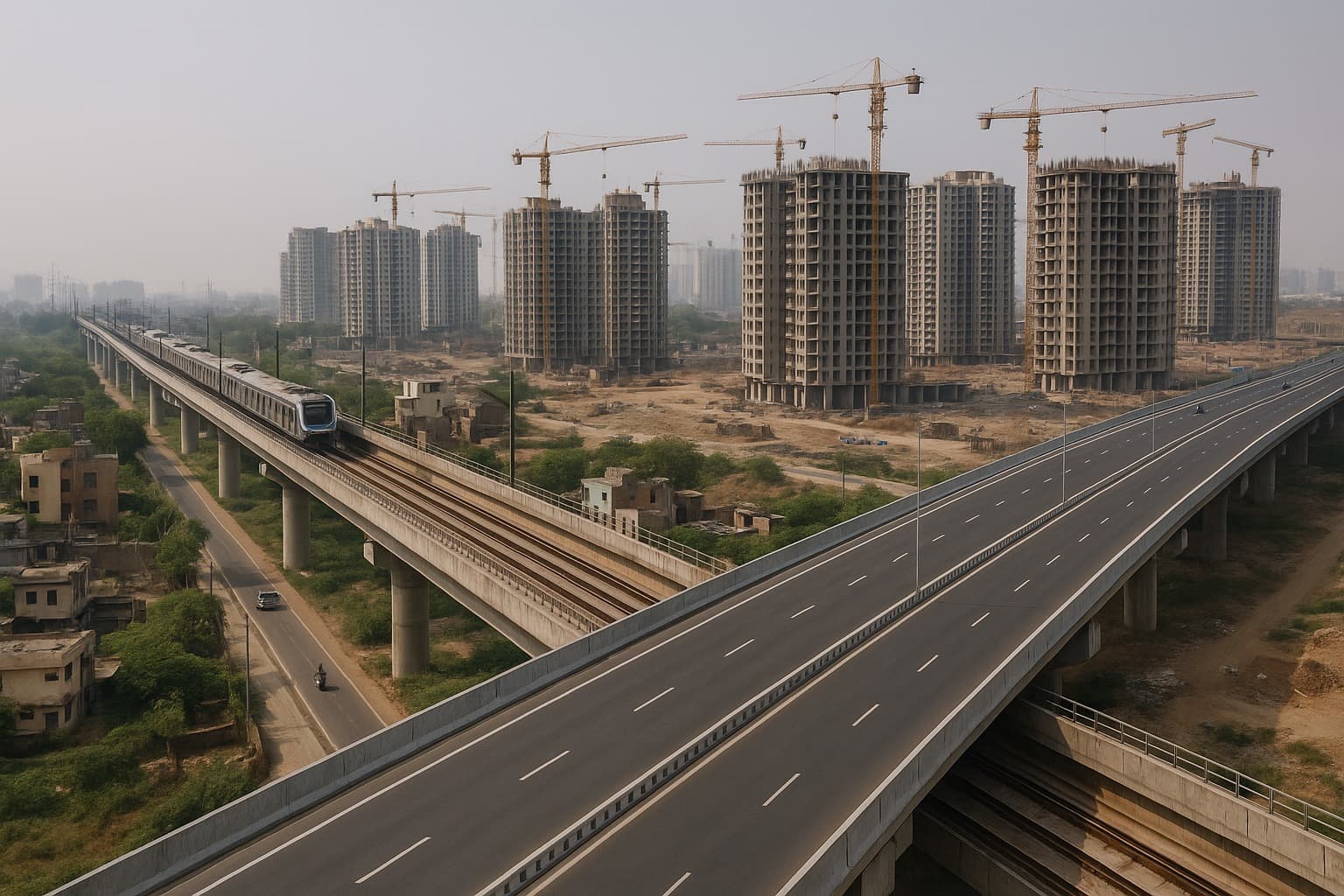Suburban Housing Boom Explained: The Rise of City Outskirts in India
Summary
India's suburban housing market is booming due to affordability, space, and improved infrastructure. City outskirts offer a balanced lifestyle, driving real estate growth and reshaping metro areas.

Suburban Housing Boom Explained
India’s real estate landscape is evolving rapidly, and one of the most striking trends in recent years has been the rise of suburban housing. With city centers becoming increasingly crowded and expensive, more homebuyers are turning to city outskirts property for better affordability, space, and lifestyle. This surge has given birth to a true housing boom India is witnessing, with suburban real estate emerging as one of the most sought-after segments.
The increasing demand for affordable homes suburbs is a key factor driving this boom. Families, young professionals, and first-time buyers are no longer willing to compromise on space or quality, and suburbs now offer the perfect blend of both. This trend is at the heart of suburban housing growth in Indian cities, reshaping residential patterns and redefining what it means to live comfortably.
Why Suburbs Are Becoming Real Estate Hubs
There are several reasons why suburbs are becoming real estate hubs. The most obvious is affordability. Property prices in metro city centers like Mumbai, Pune, and Bengaluru have skyrocketed, pushing many buyers to look beyond traditional urban limits. Suburbs, on the other hand, provide affordable homes driving suburban property demand, offering larger spaces for the same budget.
Improved infrastructure has also made suburban living increasingly viable. Metro connectivity, better roads, and expressways have transformed areas once considered remote into well-connected, thriving communities. As a result, developers are investing heavily in suburban real estate, and housing boom in Indian suburban areas is becoming a reality.
Advantages of Suburban Living
When comparing suburban living vs city living India, several advantages of suburban life become clear:

Affordability: Suburban properties are often 20–40% cheaper than similar city-center apartments.
More Space: Apartments and independent houses in the suburbs offer larger layouts and open areas.
Lifestyle Amenities: Modern townships include parks, gyms, schools, and retail spaces within walking distance.
Better Environment: Less traffic, cleaner air, and quieter neighborhoods make suburbs ideal for families.
While city living offers proximity to workplaces and entertainment, suburbs provide a holistic living experience, balancing comfort, affordability, and lifestyle.
The Suburban Boom in Mumbai and Pune
The housing boom in suburban areas of Mumbai and Pune provides clear examples of this trend. In Mumbai, Thane, Panvel, and Virar have emerged as high-demand areas for residential projects. Pune’s suburbs, including Hinjewadi, Wagholi, and Kharadi, have witnessed tremendous growth in suburban real estate, fueled by the IT sector and employment hubs.
These regions have also seen a rise in affordable housing demand in suburbs, with developers offering mid-income and premium apartments, modern gated communities, and township-style layouts. Families and investors alike are attracted to the suburbs’ promise of long-term value, improved lifestyle, and convenience.
Key Drivers of Suburban Growth
Several factors explain suburban housing growth in Indian cities:
Employment Opportunities: As IT parks, industrial zones, and business hubs expand into suburban areas, residents can live closer to work.
Lifestyle Preferences: Families now prioritize greenery, open spaces, and community living over urban density.
Connectivity: Roads, metro links, and expressways make commuting from suburbs faster and more convenient.
Investment Potential: Suburban properties often offer higher appreciation rates and rental yields compared to saturated city centers.
Together, these factors explain why suburban housing is booming in Indian real estate and why developers are increasingly focused on city outskirts.
Impact on Metro City Real Estate
The suburban boom is also reshaping metro cities housing. The impact of suburban growth on metro city real estate is multi-dimensional. First, it reduces pressure on city-center property prices by providing affordable alternatives. Second, it pushes developers to improve urban layouts, integrate green spaces, and launch mid-segment projects to retain buyers.

Investors are taking note. Affordable homes driving suburban property demand offer not just affordability but also long-term growth potential. Suburbs with strong infrastructure, connectivity, and employment hubs are increasingly seen as safe bets for both capital appreciation and rental income.
Employment and Lifestyle Factors
Employment growth in suburban regions has significantly fueled the housing boom in suburban areas of Mumbai and Pune. With IT parks, corporate offices, and industrial corridors moving to city outskirts, commuting stress is reduced, and the appeal of suburban living grows.
Lifestyle factors also play a crucial role. Buyers now seek safe neighborhoods, greener surroundings, and community-centric amenities. Modern townships cater to this demand with recreational facilities, retail spaces, healthcare services, and schools, making suburbs self-sufficient living hubs. These changes clearly explain why suburban housing is booming in Indian real estate.
Future Outlook
Looking ahead, the future of suburban housing in India 2025 looks bright. Developers are expected to continue launching integrated townships with residential, commercial, and recreational zones. Improved metro connectivity and road networks will make commuting seamless, while growing employment hubs will anchor suburban development.
For investors, suburban areas offer both affordability and growth potential. Buyers are choosing suburbs not only for larger homes and better living conditions but also for long-term property appreciation, making suburbs a prime choice in India’s evolving real estate landscape.
Conclusion
The suburban housing boom explained highlights a profound shift in Indian real estate. With rising demand for affordable homes suburbs, better infrastructure, and lifestyle-oriented townships, suburban real estate has emerged as a preferred choice for homebuyers. The housing boom in Indian suburban areas is reshaping residential trends, while the impact of suburban growth on metro city real estate is prompting developers to innovate. With strong future prospects and increasing connectivity, the future of suburban housing in India 2025 promises comfortable living and strategic investment opportunities, making suburbs the heart of India’s real estate evolution.
Summary (100 words)
India’s suburban housing market is booming due to rising demand for affordable homes suburbs and improved metro connectivity. City outskirts in Mumbai, Pune, and other metro regions are witnessing rapid growth, driven by larger living spaces, lifestyle amenities, and proximity to employment hubs. Buyers increasingly prefer suburbs over congested city centers, resulting in suburban housing growth in Indian cities. The trend also affects urban property, encouraging better planning and integrated communities. With continued infrastructure improvements and investment potential, the future of suburban housing in India 2025 looks strong, offering both quality living and lucrative opportunities for homeowners and investors alike.
